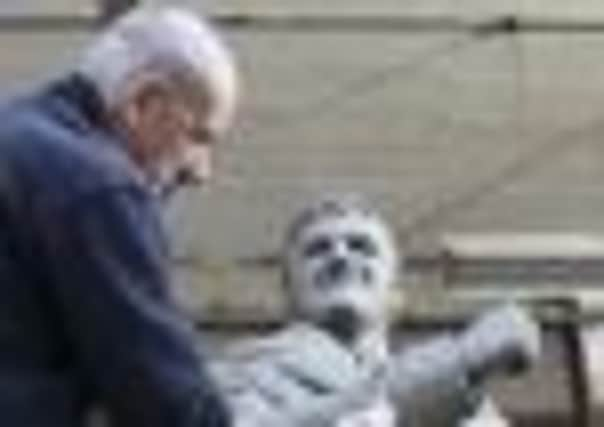Revie ready for kick-off


WHEN Graham Ibbeson’s statue of Eric Morecambe was unveiled by the Queen in 1999, the Duke of Edinburgh turned to the crowd and said: “What do you think of it so far?” at which point Eric’s daughter, Gail, replied, “rubbish” causing everyone to burst out laughing.
It was, up to that point, the most high-profile sculpture of Ibbeson’s career and is said to be the most photographed public statue in the north west of England. Since then, the Barnsley-born sculptor has carved a name for himself with his public portraits of Laurel and Hardy, Fred Trueman and Dickie Bird, and next weekend Don Revie becomes the latest sporting icon to be immortalised in bronze.
Advertisement
Hide AdAdvertisement
Hide AdIbbeson’s statue of the former Leeds United manager is officially unveiled at Elland Road and will no doubt draw a big crowd with fans keen to reminisce on the club’s glory days. It probably won’t be the first time they will have seen one of Ibbeson’s sculptures. His work can be found in more than 30 towns and cities up and down the country, including Leeds which is home to his statue of Second World pilot Arthur Aaron, who was posthumously awarded the Victoria Cross for saving the lives of his crew despite being fatally wounded.


And Ibbeson is a man in demand right now. As well as the Revie statue, which will be unveiled by members of the 1972 FA cup winning team, he’s recently completed a five-metre high sculpture at Hadleigh, in Essex, to commemorate the 2012 mountain bike Olympics. His statue of Hull’s David Whitfield has finally been given the go-ahead to be put up opposite the Hull New Theatre where the tenor played numerous times during his 1950s heyday. He’s also been working on his newly-published biography, co-written with John Threlkeld. The People’s Sculptor – Bronze, Clay and Life, is a detailed and colourful account of his life, capturing the story of the miner’s son who rose to become one of Britain’s most acclaimed sculptors.
The last time I visited Ibbeson at his Barnsley home he was just starting work on his Fred Trueman sculpture. That was five years ago, since when he has added to his already prolific output. “I live around these things,” he says, “they’re part and parcel of my character and my family’s character but when I look back I don’t think I’ve made enough.”
His reputation as a sculptor stretches far beyond our shores and yet he didn’t start out with a burning ambition to be one. Born and brought up in Cudworth, a few miles outside Barnsley, he comes from a family of miners so was perhaps destined to work with his hands, just not in the way they did.
Advertisement
Hide AdAdvertisement
Hide AdAfter leaving school shortly before his 15th birthday with no qualifications, he worked briefly as an apprentice electrician with the National Coal Board, before applying to study at Barnsley Art College. He trained as a figurative artist but it was while studying in Chesterfield that a Polish tutor taught him to look at the world through the eyes of a sculptor. “He was the one who looked at my drawings and said to me, ‘you’re a sculptor’ which I hadn’t thought about before then.”
This gave him the focus he needed. “I started off doing garden gnomes because that’s all I knew about sculpture back then. I did this family of gnomes and in the end I plucked up the courage to do life-size figures.” He went on to gain a first class honours degree from Trent Polytechnic, before embarking on a Fine Art masters degree at the Royal College of Art, in London, studying alongside future Turner Prize winners Tony Cragg and Richard Deacon.
He returned to Barnsley in the late 70s, by which time he had a wife and young family. As a teenager, he couldn’t wait to escape his hometown but his childhood memories of the community he grew up in have inspired much if his work, including the Little Barnsley Buddha and the Grimethorpe Flyer, both of which are an affectionate nod to his working class roots.
“When you’re a kid and you tie cardboard wings to your arms it’s inevitable you’re going to come a cropper, but it’s about naive optimism and that desire to escape,” he explains. “But I think a lot of what I do comes from the town I was born and bred in. People think the men were hard, but the women were tough, too, and that idea of the strong, domineering woman is picture-postcard stuff but I try and turn it into a gag. But at t